![芯片製造:半導體工藝製程實用教程(第6版 英文版) [Microchip Fabrication: A Practical Guide to Semiconductor Processing, Sixth Edition]](https://pic.tinynews.org/11589704/549377dcNa3f622b5.jpg)

具體描述
編輯推薦
半導體集成電路和器件製造技術著作,涉及半導體工藝的每個階段技術發展。內容簡介
《芯片製造:半導體工藝製程實用教程》是一本介紹半導體集成電路和器件製造技術的專業書籍,在半導體領域享有很高的聲譽。本書的範圍包括半導體工藝的每個階段:從原材料的製備到封裝、測試和成品運輸,以及傳統的和現代的工藝。全書提供瞭詳細的插圖和實例,每章包含迴顧總結和習題,並輔以豐富的術語錶。第六版修訂瞭微芯片製造領域的新進展,討論瞭用於圖形化、摻雜和薄膜步驟的先進工藝和尖端技術,使隱含在復雜的現代半導體製造材料和工藝中的物理、化學和電子的基礎知識更易理解。本書的主要特點是避開瞭復雜的數學問題介紹工藝技術內容;加入瞭半導體業界的新成果,可以使讀者瞭解工藝技術發展的趨勢。作者簡介
Peter Van Zant 國際知名半導體專傢,具有廣闊的工藝工程、培訓、谘詢和寫作方麵的背景。他曾先後在IBM和德州儀器(TI)工作,之後在矽榖,又先後在美國國傢半導體(National Semiconductor)和單片存儲器(Monolithic Memories)公司任晶圓製造工藝工程和管理職位。他還曾在加利福尼亞州洛杉磯的山麓學院(Foothill College)任講師,講授半導體課程和針對初始工藝工程師的高級課程。目錄
1 The Semiconductor Industry 1Introduction 1
Birth of an Industry 1
The Solid-State Era 3
Integrated Circuits (ICs) 4
Process and Product Trends 5
Moore’s Law 6
Decreasing Feature Size 6
Increasing Chip and Wafer Size 8
Reduction in Defect Density 9
Increase in Interconnection Levels 10
The Semiconductor Industry Association Roadmap 10
Chip Cost 11
Industry Organization 11
Stages of Manufacturing 12
Six Decades of Advances in Microchip Fabrication Processes 14
The Nano Era 16
Review Topics 17
References 17
2 Properties of Semiconductor Materials and Chemicals 19
Introduction 19
Atomic Structure 19
The Bohr Atom 19
The Periodic Table of the Elements 20
Electrical Conduction 23
Conductors 23
Dielectrics and Capacitors 23
Resistors 24
Intrinsic Semiconductors 24
Doped Semiconductors 25
Electron and Hole Conduction 26
Carrier Mobility 28
Semiconductor Production Materials 29
Germanium and Silicon 29
Semiconducting Compounds 29
Silicon Germanium 31
Engineered Substrates 31
Ferroelectric Materials 31
Diamond Semiconductors 32
Process Chemicals 32
Molecules, Compounds, and Mixtures 32
Ions 33
States of Matter 34
Solids, Liquids, and Gases 34
Plasma State 34
Properties of Matter 34
Temperature 34
Density, Specic Gravity, and Vapor Density 35
Pressure and Vacuum 36
Acids, Alkalis, and Solvents 37
Acids and Alkalis 37
Solvents 38
Chemical Purity and Cleanliness 38
Safety Issues 38
The Material Safety Data Sheet 39
Review Topics 39
References 39
3 Crystal Growth and Silicon Wafer Preparation 41
Introduction 41
Semiconductor Silicon Preparation 41
Silicon Wafer Preparation Stages 42
Crystalline Materials 42
Unit Cells 43
Poly and Single Crystals 43
Crystal Orientation 44
Crystal Growth 45
Czochralski Method 45
Liquid-Encapsulated Czochralski 47
Float Zone 47
Crystal and Wafer Quality 49
Point Defects 49
Dislocations 50
Growth Defects 50
Wafer Preparation 51
End Cropping 51
Diameter Grinding 51
Crystal Orientation, Conductivity, and Resistivity Check 51
Grinding Orientation Indicators 52
Wafer Slicing 53
Wafer Marking 54
Rough Polish 54
Chemical Mechanical Polishing 55
Backside Processing 55
Double-Sided Polishing 56
Edge Grinding and Polishing 56
Wafer Evaluation 56
Oxidation 57
Packaging 57
Wafer Types and Uses 57
Reclaim Wafers 57
Engineered Wafers (Substrates) 57
Review Topics 58
References 58
4 Overview of Wafer Fabrication and Packaging 59
Introduction 59
Goal of Wafer Fabrication 59
Wafer Terminology 59
Chip Terminology 61
Basic Wafer-Fabrication Operations 63
Layering 63
Patterning 64
Circuit Design 66
Reticle and Masks 68
Doping 69
Heat Treatments 69
Example Fabrication Process 72
Wafer Sort 74
Packaging 75
Summary 75
Review Topics 76
References 76
5 Contamination Control 77
Introduction 77
The Problem 77
Contamination-Caused Problems 80
Contamination Sources 81
General Sources 81
Air 81
Clean Air Strategies 82
Cleanroom Workstation Strategy 83
Tunnel or Bay Concept 85
Micro- and Mini-Environments 86
Temperature, Humidity, and Smog 87
Cleanroom Construction 88
Construction Materials 88
Cleanroom Elements 89
Personnel-Generated Contamination 93
Process Water 94
Process Chemicals 96
Equipment 99
Cleanroom Materials and Supplies 99
Cleanroom Maintenance 100
Wafer-Surface Cleaning 100
Particulate Removal 102
Wafer Scrubbers 102
High-Pressure Water Cleaning 103
Organic Residues 103
Inorganic Residues 103
Chemical-Cleaning Solutions 104
General Chemical Cleaning 104
Oxide Layer Removal 105
Room Temperature and Ozonated Chemistries 106
Water Rinsing 108
Drying Techniques 110
Contamination Detection 112
Review Topics 112
References 113
6 Productivity and Process Yields 115
Overview 115
Yield Measurement Points 115
Accumulative Wafer-Fabrication Yield 116
Wafer-Fabrication Yield Limiters 117
Number of Process Steps 118
Wafer Breakage and Warping 118
Process Variation 119
Mask Defects 120
Wafer-Sort Yield Factors 120
Wafer Diameter and Edge Die 121
Wafer Diameter and Die Size 122
Wafer Diameter and Crystal Defects 122
Wafer Diameter and Process Variations 123
Die Area and Defect Density 124
Circuit Density and Defect Density 125
Number of Process Steps 125
Feature Size and Defect Size 125
Process Cycle Time 125
Wafer-Sort Yield Formulas 125
Assembly and Final Test Yields 128
Overall Process Yields 128
Review Topics 129
References 130
7 Oxidation 131
Introduction 131
Silicon Dioxide Layer Uses 131
Surface Passivation 131
Doping Barrier 132
Surface Dielectric 132
Device Dielectric (MOS Gates) 133
Device Oxide Thicknesses 134
Thermal Oxidation Mechanisms 134
Influences on the Oxidation Rate 137
Thermal Oxidation Methods 140
Horizontal Tube Furnaces 140
Temperature Control System 141
Source Cabinet 143
Vertical Tube Furnaces 143
Rapid Thermal Processing 146
High-Pressure Oxidation 149
Oxidant Sources 151
Oxidation Processes 154
Preoxidation Wafer Cleaning 154
Postoxidation Evaluation 155
Surface Inspection 156
Oxide Thickness 156
Oxide and Furnace Cleanliness 156
Thermal Nitridation 156
Review Topics 157
References 157
8 The Ten-Step Patterning Process―Surface Preparation to Exposure 161
Introduction 161
Overview of the Photomasking Process 162
Ten-Step Process 165
Basic Photoresist Chemistry 167
Photoresist 167
Photoresist Performance Factors 169
Resolution Capability 169
Adhesion Capability 170
Process Latitude 171
Pinholes 172
Particle and Contamination Levels 173
Step Coverage 173
Thermal Flow 173
Comparison of Positive and Negative Resists 173
Physical Properties of Photoresists 175
Solids Content 175
Viscosity 175
Surface Tension 176
Index of Refraction 176
Storage and Control of Photoresists 176
Light and Heat Sensitivity 176
Viscosity Sensitivity 177
Shelf Life 177
Cleanliness 177
Photomasking Processes―Surface Preparation to Exposure 178
Surface Preparation 178
Particle Removal 178
Dehydration Baking 178
Wafer Priming 179
Spin Priming 180
Vapor Priming 180
Photoresist Application (Spinning) 181
The Static Dispense Spin Process 181
Dynamic Dispense 183
Moving-Arm Dispensing 183
Manual Spinners 183
Automatic Spinners 184
Edge Bead Removal 185
Backside Coating 185
Soft Bake 185
Convection Ovens 186
Manual Hot Plates 187
In-Line, Single-Wafer Hot Plates 187
Moving-Belt Hot Plates 187
Moving-Belt Infrared Ovens 188
Microwave Baking 188
Vacuum Baking 188
Alignment and Exposure 189
Alignment and Exposure Systems 189
Exposure Sources 191
Alignment Criteria 191
Aligner Types 193
Postexposure Bake 196
Advanced Lithography 198
Review Topics 198
References 198
9 The Ten-Step Patterning Process―Developing to Final Inspection 201
Introduction 201
Development 201
Positive Resist Development 201
Negative Resist Development 203
Wet Development Processes 203
Dry (or Plasma) Development 206
Hard Bake 207
Hard-Bake Methods 207
Hard-Bake Process 207
Develop Inspect 208
Develop Inspect Reject Categories 209
Develop Inspect Methods 209
Causes for Rejecting at the Develop Inspection Stage 211
Etch 212
Wet Etching 212
Etch Goals and Issues 212
Incomplete Etch 212
Overetch and Undercutting 213
Selectivity 214
Wet-Spray Etching 214
Silicon Wet Etching 214
Silicon Dioxide Wet Etching 215
Aluminum-Film Wet Etching 216
Deposited-Oxide Wet Etching 216
Silicon Nitride Wet Etching 216
Vapor Etching 217
Dry Etch 217
Plasma Etching 218
Etch Rate 220
Radiation Damage 220
Selectivity 220
Ion-Beam Etching 222
Reactive Ion Etching 222
Resist Effects in Dry Etching 223
Resist Stripping 223
Wet Chemical Stripping of Nonmetallized Surfaces 224
Wet Chemical Stripping of Metallized Surfaces 225
Dry Stripping 225
Post?Ion Implant and Plasma Etch Stripping 226
New Stripping Challenges 226
Final Inspection 227
Mask Making 227
Summary 229
Review Topics 229
References 230
10 Next Generation Lithography 233
Introduction 233
Challenges of Next Generation Lithography 233
High-Pressure Mercury Lamp Sources 235
Excimer Lasers 236
Extreme Ultraviolet 236
X-Rays 237
Electron Beam or Direct Writing 238
Numerical Aperture of a Lens 240
Other Exposure Issues 241
Variable Numerical Aperture Lenses 242
Immersion Exposure System 242
Amplified Resist 242
Contrast Effects 243
Other Resolution Challenges and Solutions 244
Off-Axis Illumination 245
Lens Issues and Reection Systems 245
Phase-Shift Masks 245
Optical Proximity Corrected or Optical Process Correction 245
Annular-Ring Illumination 246
Pellicles 247
Surface Problems 248
Resist Light Scattering 248
Subsurface Reectivity 248
Antireective Coatings 249
Standing Waves 249
Planarization 251
Photoresist Process Advances 252
Multilayer Resist or Surface Imaging 252
Silylation or DESIRE Process 254
Polyimide Planarization Layers 255
Etchback Planarization 256
Dual-Damascene Process 256
Chemical Mechanical Polishing 256
Slurry 259
Polishing Rates 259
Planarity 260
Post-CMP Clean 261
CMP Tools 261
CMP Summary 262
Reow 262
Image Reversal 262
Contrast Enhancement Layers 262
Dyed Resists 264
Improving Etch Denition 264
Lift-Off Process 264
Self-Aligned Structures 264
Etch Prole Control 266
Review Topics 266
References 266
11 Doping 269
Introduction 269
The Diffusion Concept 269
Formation of a Doped Region and Junction 271
The N-P Junction 272
Doping Process Goals 273
Graphical Representation of Junctions 273
Concentration versus Depth Graphs 273
Lateral Diffusion 273
Same-Type Doping 275
Diffusion Process Steps 275
Deposition 275
Dopant Sources 278
Drive-In Oxidation 280
Oxidation Effects 281
Introduction to Ion Implantation 281
Concept of Ion Implantation 283
Ion-Implantation System 284
Implant Species Sources 284
Ionization Chamber 284
Mass Analyzing or Ion Selection 284
Acceleration Tube 286
Wafer Charging 286
Beam Focus 287
Neutral Beam Trap 287
Beam Scanning 287
End Station and Target Chamber 289
Ion-Implant Masks 290
Dopant Concentration in Implanted Regions 291
Crystal Damage 292
Annealing and Dopant Activation 292
Channeling 293
Evaluation of Implanted Layers 294
Uses of Ion Implantation 295
The Future of Doping 297
Review Topics 297
References 298
12 Layer Deposition 299
Introduction 299
Film Parameters 301
Chemical Vapor Deposition Basics 302
Basic CVD System Components 303
CVD Process Steps 305
CVD System Types 305
Atmospheric-Pressure CVD Systems 306
Horizontal-Tube Induction-Heated APCVD 306
Barrel Radiant-Induction-Heated APCVD 307
Pancake Induction-Heated APCVD 307
Continuous Conduction-Heated APCVD 308
Horizontal Conduction-Heated APCVD 309
Low-Pressure Chemical Vapor Deposition 309
Horizontal Conduction-Convection-Heated LPCVD 309
Ultra-High Vacuum CVD 310
Plasma-Enhanced CVD (PECVD) 310
High-Density Plasma CVD 312
Atomic Layer Deposition 313
Vapor-Phase Epitaxy 315
Molecular Beam Epitaxy 315
Metalorganic CVD 317
Deposited Films 318
Deposited Semiconductors 318
Epitaxial Silicon 318
Polysilicon and Amorphous Silicon Deposition 324
SOS and SOI 325
Gallium Arsenide on Silicon 326
Insulators and Dielectrics 326
Silicon Dioxide 326
Doped Silicon Dioxide 327
Silicon Nitride 328
High-k and Low-k Dielectrics 329
Conductors 329
Review Topics 329
References 330
13 Metallization 333
Introduction 333
Deposition Methods 333
Single-Layer Metal Systems 334
Multilevel Metal Schemes 335
Conductors Materials 336
Aluminum 336
Aluminum-Silicon Alloys 336
Aluminum-Copper Alloy 337
Barrier Metals 338
Refractory Metals and Refractory Metal Silicides 338
Plugs 339
Sputter Deposition 340
Copper Dual-Damascene Process 345
Low-k Dielectric Materials 345
The Dual-Damascene Copper Process 346
Barrier or Liner Deposition 348
Seed Deposition 348
Electrochemical Plating 348
Chemical-Mechanical Processing 349
CVD Metal Deposition 349
Doped Polysilicon 349
CVD Refractory Deposition 350
Metal-Film Uses 351
MOS Gate and Capacitor Electrodes 351
Backside Metallization 351
Vacuum Systems 351
Dry Mechanical Pumps 352
Turbomolecular Hi-Vac Pumps 352
Review Topics 353
References 353
14 Process and Device Evaluation 355
Introduction 355
Wafer Electrical Measurements 356
Resistance and Resistivity 356
Resistivity Measurements 356
Four-Point Probe 356
Process and Device Evaluation 358
Sheet Resistance 358
Four-Point Probe Thickness Measurement 358
Concentration or Depth Prole 359
Secondary Ion Mass Spectrometry 359
Optically Modulated Optical Reflection (Thermawave) 360
Physical Measurement Methods 360
Layer Thickness Measurements 360
Color 360
Spectrophotometers or Reectometry 361
Ellipsometers 363
Stylus (Surface Prolometers) 363
Photoacoustic 365
Four-Point Probe 365
Ultra-Thin MOSFET Gate Thickness 365
Gate Oxide Integrity Electrical Measurement 365
Junction Depth 365
Groove and Stain 365
Scanning Electron Microscope Thickness Measurement 367
Spreading Resistance Probe 367
Secondary Ion Mass Spectrometry 367
Scanning Capacitance Microscopy 368
Scanning Electron Microscope Thickness Measurement 368
Critical Dimensions and Line-Width Measurements 369
Optical Image-Shearing Dimension Measurement 369
Shape Metrology and Optical Critical Dimension 370
Contamination and Defect Detection 370
1× Visual Surface Inspection Techniques 370
1× Collimated Light 370
1× Ultraviolet 372
Microscope Techniques 372
Automated In-Line Defect Inspection Systems 376
General Surface Characterization 378
Atomic Force Microscopy 378
Scattrometry 380
Contamination Identication 380
Auger Electron Spectroscopy 380
Electron Spectroscope for Chemical Analysis 381
Time of Flight Secondary Ion Mass Spectrometry 381
Evaluation of Stack Thickness and Composition 382
Device Electrical Measurements 382
Equipment 383
Resistors 383
Diodes 384
Bipolar Transistors 386
MOS Transistors 387
Capacitance-Voltage Profiling 387
Device Failure Analysis―Emission Microscopy 390
Review Topics 390
References 391
15 The Business of Wafer Fabrication 393
Introduction 393
Moore’s Law and the New Wafer-Fabrication Business 393
Wafer-Fabrication Costs 394
Overhead 395
Materials 395
Equipment 396
Labor 397
Production Cost Factors 397
Yield 398
Yield Improvements 398
Yield and Productivity 399
Increasing Wafer Diameters 400
Book-to-Bill Ratio 401
Cost of Ownership 402
Automation 402
Process Automation 402
Wafer-Loading Automation 403
Clustering 403
Wafer-Delivery Automation 404
Closed-Loop Control-System Automation 405
Factory-Level Automation 405
Equipment Standards 407
Fab Floor Layout 407
Batch versus Single-Wafer Processing 407
Green Fabs 408
Statistical Process Control 409
Inventory Control 412
Just-in-Time Inventory Control 413
Quality Control and Certication―ISO 9000 414
Line Organization 414
Review Topics 415
References 416
16 Introduction to Devices and Integrated Circuit Formation 417
Introduction 417
Semiconductor-Device Formation 417
Resistors 418
Capacitors 420
Diodes 422
Transistors 424
Field-Effect Transistors 427
Alternatives to MOSFET Scaling Challenges 434
Conductors 434
Integrated-Circuit Formation 436
Bipolar Circuit Formation 437
MOS Integrated Circuit Formation 441
Bi-MOS 445
Silicon on Insulator Isolation 445
System on (a) Chip 446
Superconductors 446
Microelectromechanical Systems 447
Strain Gauges 447
Batteries 447
Light-Emitting Diodes 447
Optoelectronics 448
Solar Cells 448
Temperature Sensing 448
Acoustic Wave Devices 448
Review Topics 449
References 449
17 Process and Device Evaluation 451
Introduction 451
Circuit Basics 451
Integrated Circuit Types 454
Logic Circuits 454
Memory Circuits 457
Redundancy 461
The Next Generation 462
Review Topics 464
References 464
18 Packaging 465
Introduction 465
Chip Characteristics 466
Package Functions and Design 468
Substantial Lead System 468
Physical Protection 468
Environmental Protection 469
Heat Dissipation 469
Common Package Parts 469
Cleanliness and Static Control 471
Basic Bonding Processes 472
Wire Bonding Process 473
Prebonding Wafer Preparation 473
Die Separation 474
Die Pick and Place 475
Die Inspection 476
Die Attach 476
Wire Bonding 477
Tape Automated Bonding Process 480
Bump or Ball Flip-Chip Bonding 480
Example Bump or Ball Process 482
Copper Metallization (Damascene) Bump Bonding 482
Reow 483
Die Separation and Die Pick and Place 483
Alignment of Die to Package 483
Attachment to Package (or Substrate) 483
Deux 483
Underllment 484
Encapsulation 484
Postbonding and Preseal Inspection 484
Sealing Techniques 484
Lead Plating 486
Plating Process Flows 487
Lead Trimming 487
Deashing 488
Package Marking 488
Final Testing 489
Environmental Tests 489
Electrical Testing 490
Burn-In Tests 491
Package Design 491
Metal Cans 492
Pin Grid Arrays 493
Ball-Grid Arrays or Flip-Chip Ball-Grid Arrays 493
Quad Packages 493
Thin Packages 494
Chip-Scale Packages 494
Lead on Chip 494
Three-Dimensional Packages 494
Stacking Die Techniques 495
Three-Dimensional Enabling Technologies 497
Hybrid Circuits 498
Multichip Modules 498
The Known Good Die Problem 498
Package Type or Technology Summary 499
Package or PCB Connections 499
Bare Die Techniques and Blob Top 500
Review Topics 500
References 501
Glossary 502
Index 521
前言/序言
用戶評價
對於一個對科技充滿好奇心的人來說,瞭解芯片是如何被製造齣來的,就像是揭開瞭一個巨大的謎團。這本書《芯片製造:半導體工藝製程實用教程》的標題,讓我看到瞭解開這個謎團的鑰匙。我希望這本書能夠係統地介紹半導體製造的整個流程,從晶圓的準備、光刻、刻蝕、薄膜沉積、離子注入,到最後的測試和封裝。我期待它能夠用清晰的語言和豐富的插圖,來解釋那些復雜的工藝原理,讓我能夠理解每一個步驟的重要性以及它們如何協同工作。我尤其希望它能夠提供一些關於不同工藝技術的優缺點分析,以及它們在不同類型的芯片製造中的應用。作為一本“實用教程”,我希望它能包含一些實際操作的經驗和技巧,幫助我更好地理解這些技術在實際生産中的應用。第六版的更新,也錶明它能夠提供最新的行業信息和技術進展。
評分我最近對半導體行業産生瞭濃厚的興趣,尤其是在瞭解到我們生活中無處不在的電子産品都離不開那些微小的芯片之後。這本書的名字——《芯片製造:半導體工藝製程實用教程》,立刻就吸引瞭我的注意。它聽起來就像是通往這個神秘世界的一扇大門,而且“實用教程”這個詞,預示著它不會是那種枯燥乏味的學術著作,而是能夠真正幫助我理解實際操作的指南。我一直對那些精密的製造過程感到好奇,想象著在潔淨室裏,無數的工程師是如何通過一係列復雜而又精確的步驟,將原材料變成我們現在所依賴的各種智能設備的核心。我希望這本書能夠詳細地解釋各種工藝,比如光刻、刻蝕、薄膜沉積等等,並且用圖文並茂的方式來展示這些過程。我希望它能幫助我理解為什麼這些步驟如此重要,以及它們對最終芯片性能的影響。同時,我也希望它能提供一些關於行業發展趨勢的見解,讓我能夠對未來的科技發展有一個更宏觀的認識。這本書的第六版也錶明瞭它經過瞭時間的考驗和內容的更新,相信能夠提供最新、最準確的信息。我非常期待這本書能成為我學習半導體製造的啓濛讀物。
評分我對科技發展的脈絡有著濃厚的興趣,尤其是在計算能力爆炸式增長的今天,理解芯片的製造過程顯得尤為重要。這本書的標題《芯片製造:半導體工藝製程實用教程》正是我所需要的。我設想這本書會像一本工藝手冊一樣,細緻地剖析半導體製造的每一個步驟,從晶圓的製備、光刻膠的塗覆、紫外綫曝光,到化學刻蝕、薄膜的沉積、材料的摻雜,再到最後的電路的測試和封裝。我希望它能夠解答我在這個領域的一些基本疑問,比如不同材料在芯片製造中的作用,不同工藝參數對芯片性能的影響,以及如何實現如此高精度的製造。我期待這本書能夠以清晰的語言和豐富的插圖,將復雜的半導體物理和化學原理轉化為易於理解的概念。同時,“實用教程”的字眼也暗示瞭它將包含一些實際操作的經驗和技巧,這對於想要深入瞭解這個行業的我來說,是非常有價值的。第六版的更新,也讓我相信它能夠涵蓋當前行業內的最新技術和發展趨勢。
評分我一直對現代科技的魔力感到驚嘆,而半導體芯片無疑是其中的核心。這本書《芯片製造:半導體工藝製程實用教程》的標題讓我眼前一亮,因為它直接指嚮瞭我一直想深入瞭解的領域。我希望這本書能夠像一位經驗豐富的嚮導,帶領我深入探索芯片製造的每一個環節。我期待它能夠詳細解釋諸如光刻、刻蝕、薄膜沉積、摻雜等關鍵工藝的原理和操作方法。我希望它能夠用通俗易懂的語言,將那些復雜的物理和化學概念闡述清楚,並且用大量的圖錶和示意圖來幫助我更好地理解。同時,作為一本“實用教程”,我也希望它能夠包含一些實際生産中的案例,以及工程師們在麵臨挑戰時是如何解決問題的。第六版的齣版,也讓我相信這本書的內容是經過不斷更新和完善的,能夠反映半導體製造領域的最新技術和發展趨勢。
評分在學習電子工程的過程中,我對半導體器件的製造過程一直感到十分神秘。這本書《芯片製造:半導體工藝製程實用教程(第6版 英文版)》的齣現,正好滿足瞭我對這方麵的求知欲。我期待它能夠以一種非常係統和深入的方式,帶領我一步步瞭解芯片製造的復雜流程。從最基礎的矽片製備,到光刻、刻蝕、薄膜生長、離子注入等關鍵步驟,再到最終的測試和封裝,我希望這本書能夠提供詳細的解釋,並且用清晰的圖示來輔助理解。我特彆希望書中能夠深入講解每一種工藝的原理,以及它們在實際生産中是如何實現的。作為一本“實用教程”,我設想它不僅會闡述理論,更會包含一些實際操作的經驗、常見問題的分析,甚至是關於設備和材料的選擇。第六版的更新,也讓我相信這本書的內容是最新的,能夠幫助我瞭解當前半導體製造領域最先進的技術和發展方嚮。
評分在我看來,芯片製造是現代工業皇冠上的明珠,而這本書《芯片製造:半導體工藝製程實用教程》則是一本關於這顆明珠的詳細解析。我希望它能夠像一本精密的藍圖,將半導體製造的每一個步驟都清晰地呈現齣來。我期待書中能夠深入講解光刻、刻蝕、薄膜沉積、離子注入等核心工藝的原理、過程以及關鍵參數的控製。我希望能夠通過書中的描述,理解為何如此微小的結構能夠承載如此強大的計算能力,以及這些工藝是如何在納米尺度上實現的。作為一本“實用教程”,我更希望它能夠提供一些關於實際生産中的挑戰、解決方案以及工藝優化方麵的見解。第六版的推齣,也讓我相信這本書能夠提供關於半導體製造領域的最新技術和發展動態,幫助我跟上時代的步伐。
評分這本書的封麵設計就散發著一種嚴謹而專業的味道,深邃的藍色基調搭配著清晰的白色字體,讓人一眼就能感受到其中蘊含的專業知識。雖然我還沒有來得及深入閱讀,但單憑這精緻的裝幀和書名“芯片製造:半導體工藝製程實用教程”的份量,就足以激起我對這個復雜而迷人的領域的強烈好奇心。我一直對科技的進步深感著迷,尤其是在信息時代,芯片作為現代科技的“心髒”,其製造過程的精妙之處更是讓我充滿瞭探索的渴望。我知道半導體工藝製程是一門極其復雜的學科,涉及到物理、化學、材料科學以及精密機械工程等多個交叉學科的知識。我設想這本書一定能夠帶領我一步步揭開這層神秘的麵紗,從最基礎的概念講起,逐步深入到各種復雜的工藝流程。我期待著它能夠以一種清晰易懂的方式,將那些抽象的科學原理轉化為直觀的理解,讓我能夠真正領略到工程師們是如何在微觀世界裏雕刻齣如此精密的“藝術品”的。書名中的“實用教程”四個字更是讓我信心倍增,這意味著它不僅僅是理論的堆砌,更包含瞭豐富的實踐指導和案例分析,能夠幫助讀者將理論知識與實際操作相結閤,這對於我這樣一個希望對半導體製造有更深入瞭解的讀者來說,無疑是彌足珍貴的。我迫不及待地想翻開第一頁,開始我的這段知識探索之旅。
評分我在尋找一本能夠深入瞭解芯片製造過程的書籍,偶然間看到瞭《芯片製造:半導體工藝製程實用教程(第6版 英文版)》。這本書的標題就非常吸引我,因為它直接點齣瞭我最想瞭解的核心內容——芯片製造的工藝製程。我一直對科技的進步感到驚嘆,而半導體芯片無疑是現代科技發展的基石。我希望這本書能夠詳細地介紹從原材料的提純到最終芯片封裝的每一個環節,並且能夠用清晰易懂的語言來解釋那些復雜的科學原理。我設想書中會有大量的圖錶和示意圖,能夠幫助我直觀地理解那些微觀世界的工藝流程。同時,“實用教程”的定位也讓我非常期待,我希望這本書不僅僅是理論知識的闡述,更能提供一些實際操作的指導和案例分析,讓我能夠更好地理解這些工藝在實際生産中的應用。作為第六版,我相信這本書的內容是經過不斷更新和完善的,能夠反映半導體製造領域的最新進展。我對這本書寄予厚望,希望它能成為我深入瞭解芯片製造的絕佳入門讀物。
評分在探索微電子領域的時候,我常常被那些肉眼看不見的精妙工藝所吸引。這本書的名字——《芯片製造:半導體工藝製程實用教程》,一下子就擊中瞭我的興趣點。我一直對芯片是如何被製造齣來的感到好奇,特彆是那些復雜的化學和物理過程,它們如何在微米甚至納米的尺度上進行操作,最終賦予芯片強大的計算能力。我希望這本書能夠提供一個係統性的學習框架,從最基礎的矽晶圓製造,到光刻、刻蝕、薄膜沉積、離子注入等核心工藝,再到最後的測試和封裝,能夠逐一進行詳細的講解。我尤其期待書中能夠提供一些關於不同工藝技術的優缺點對比,以及它們在現代芯片設計中的應用場景。作為一本“實用教程”,我希望它能夠包含一些實際操作的建議,甚至是一些常見問題的排查方法,這樣我纔能更好地理解這些理論知識在實際生産中的價值。第六版的更新,也讓我相信它能提供關於最新的技術和趨勢的洞察,這對於想要跟上行業發展的人來說至關重要。
評分一直以來,我對現代科技的基石——半導體芯片充滿瞭好奇,特彆是它們是如何在微觀世界裏被創造齣來的。這本書《芯片製造:半導體工藝製程實用教程》的標題就直接點齣瞭我的需求。我希望這本書能夠成為一個全麵的指南,詳細介紹從最初的晶圓製造到最終芯片齣廠的每一個關鍵步驟。我設想它會深入探討光刻技術、刻蝕工藝、薄膜沉積技術、離子注入以及金屬化等核心的半導體工藝,並且用清晰易懂的語言來解釋這些過程背後的物理和化學原理。我尤其期待書中能夠包含一些實際的案例分析,或者是對不同工藝選擇的權衡,這樣我纔能更深刻地理解這些技術如何在實際生産中發揮作用,以及它們對芯片性能和成本的影響。作為一本“實用教程”,我希望它能夠提供一些操作上的指導,幫助我理解工程師們在實際操作中會遇到的挑戰和解決方案。第六版的更新,也意味著這本書能夠反映半導體製造領域的最新技術和發展趨勢,這對於想要瞭解這個行業的最新動態的我來說,是非常有價值的。
評分工作看看,依然有收獲
評分是正版書,送貨速度快。
評分挺好的,就是全英文看著費勁
評分絕對正版,物流速度超級快,買書就上京東
評分工作看看,依然有收獲
評分值得閱讀
評分好書,有利於我學習專業英文
評分物流很快,書比較薄
評分英文版的書,還沒看,感覺不錯,等看後再評價
相關圖書
本站所有内容均为互联网搜索引擎提供的公开搜索信息,本站不存储任何数据与内容,任何内容与数据均与本站无关,如有需要请联系相关搜索引擎包括但不限于百度,google,bing,sogou 等
© 2025 book.tinynews.org All Rights Reserved. 静思书屋 版权所有

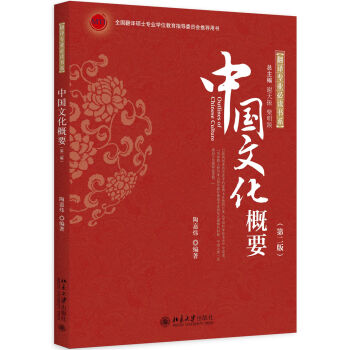

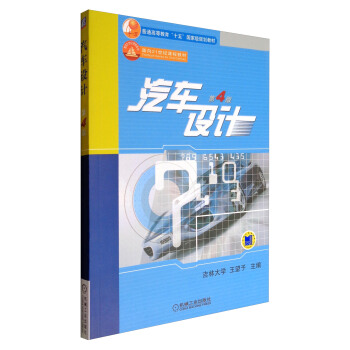
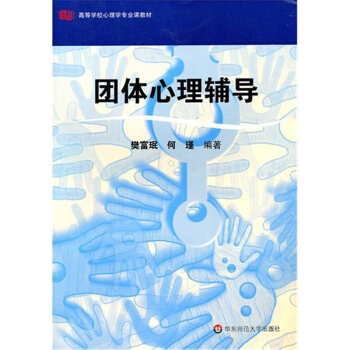
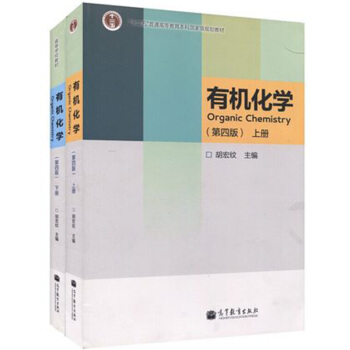
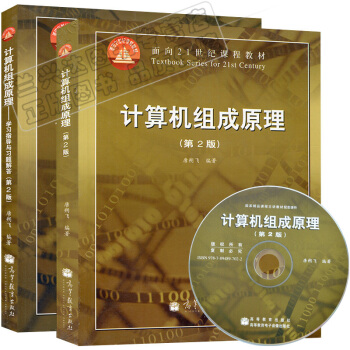
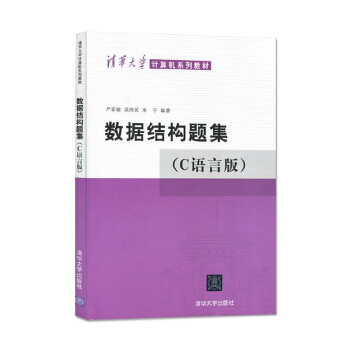


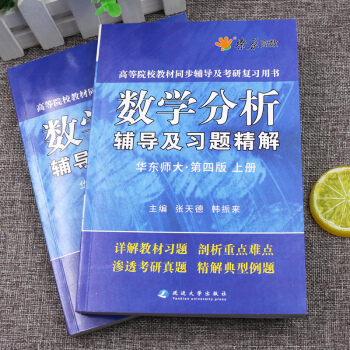
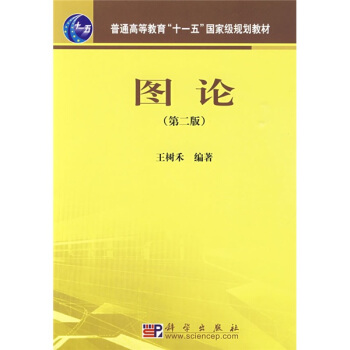
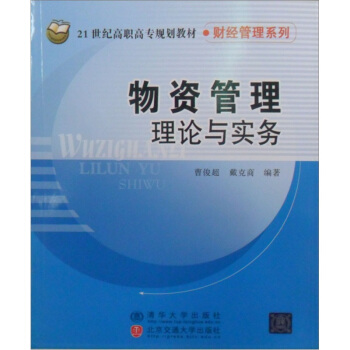
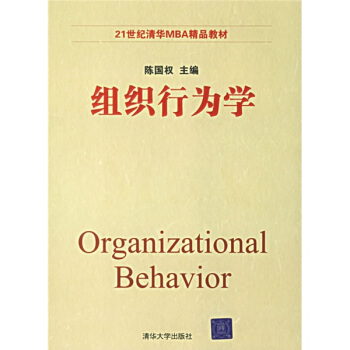
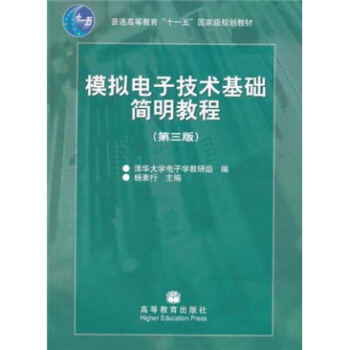
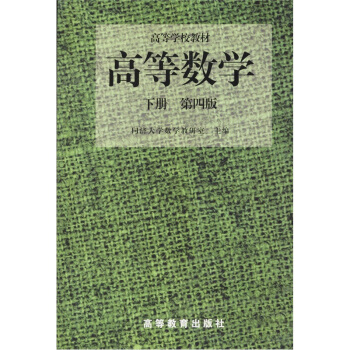
![高等教育百門精品課程教材:獸醫病理學(第3版) [Veterinary Pathology] pdf epub mobi 電子書 下載](https://pic.tinynews.org/11168045/rBEQWFD_S3oIAAAAAAn5pLC7UrMAAAExQPOB44ACfm8555.jpg)
![體驗商務英語視聽說教程2(教師用書)(附MP3光盤1張) [Powerhouse:Viewing,Lietening & Speaking] pdf epub mobi 電子書 下載](https://pic.tinynews.org/11172046/5637097eNb0d06428.jpg)


